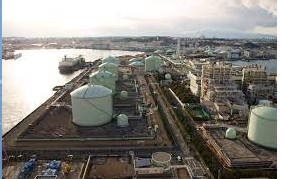Study suggests LNG production facilities should monitor methane emissions – just like the rest of the gas supply chain

By James France
Many parts of the world are looking to liquefied natural gas to provide a pathway to a cleaner and more secure energy resource — interest that has only grown since Russia’s war on Ukraine has shaken global energy markets. Meanwhile, gas-producing countries see LNG as a critical growth opportunity. The question is what an LNG boom would mean for the climate and communities near LNG facilities.
Its climate impact will depend largely on whether LNG yields net emission greenhouse gas reductions compared to competing energy resources. That, in turn, depends on whether shippers and operators can maintain tight control over the amount of methane escaping along a lengthy supply chain. Methane is the main ingredient of natural gas and packs more than 80 times the warming power of carbon dioxide over a 20-year time frame.
A decade of research has comprehensively documented methane emission rates across the sprawling system. We know that LNG compression, transport and regasification are additional emissions sources, but real-world data on these processes has been scarce.
Study suggests LNG production facilities should monitor methane emissions - just like the rest of the gas supply chain Share on XA study published this week in Environmental Science & Technology begins to fill in that data gap. It suggests the methane emissions profile of LNG depends heavily on emissions upstream from wells, pipelines and other facilities. The new findings also underscore the importance of direct measurement, monitoring and mitigation of methane emissions at each stage of the long process.
Conducted by scientists at the UK National Physical Laboratory, the study provides multiple emission snapshots at three liquefaction terminals (together representing approximately 6% of 2019 global liquefaction capacity) and two regasification terminals (presenting approximately 3.5% of 2019 global regasification capacity). It’s the first study we know of to provide directly measured emission rates for LNG terminals and specific functional elements within each facility.
(EDF scientists helped coordinate the effort as science advisors for the Climate and Clean Air Coalition methane science studies.)
Tracing the process
The conversion of natural gas to a liquid so it can be transported efficiently is called liquefaction. Regasification at the other end is the reverse. Each step produces methane emissions separate and in addition to emissions elsewhere in the natural gas supply chain.
The three liquefaction terminals in the study averaged a 0.07% methane leak rate (that is, 0.07% of the natural gas that was liquefied was emitted as methane). The two regasification terminals averaged a 0.02% leak rate. The combined terminal leak rate (liquefaction and gasification but excluding LNG shipping) is just under 0.1%.
That seems like a low number, but there are important caveats.
First, it’s twice the 0.05% threshold for LNG processing, storage and terminals that would trigger emission charges under the Methane Emissions Reduction Program in the U.S. Inflation Reduction Act. The figure also does not include leakage during the mostly maritime transport between the terminals. Nor does the study consider carbon dioxide emissions associated with the energy-intensive processes, which have previously been shown to be significant. And these facilities were assessed with the cooperation and foreknowledge of their operators. Further research, perhaps with satellites, can help ground truth these results.
Data in the study are just snapshots, not long-term assessments. The researchers found that flaring, venting and other intermittent and unpredictable high-emission events were responsible for a significant portion of total emissions. This echoes research elsewhere in the gas supply chain and suggests much more monitoring is needed.
Implications for local communities
It is also important to note that while methane emissions are important, they are far from the only impact these facilities can pose to local communities. Further study should also be undertaken to look at other forms of pollution that can have serious impacts on the health and well-being of neighboring communities. For too long these frontline communities have been subjected to disparate and unfair impacts. This must end.
Meanwhile, it is imperative that we transition to cleaner forms of energy as quickly as possible. And during that transition we need to do everything we can to cut emissions and to ensure that we are building new infrastructure that does not make sense with that rapid transition in mind. Community voices must be included in that debate, as well as their desires for a just transition that includes good-paying jobs and clean air and water.
Implications for the industry
Determining the true life-cycle emission profile of LNG involves adding these additional LNG-specific emissions on top of the emission profile of the natural gas used to produce the LNG. In other words, LNG can’t be any cleaner than the natural gas it’s made from. And the additive methane emissions from LNG liquefaction and regasification must be minimal for LNG to be a productive player in a decarbonized economy.
It is very important not to draw final conclusions from one study. But this new paper provides a strong model for follow-up research and some optimism that with strong monitoring and leak repair programs, emissions from LNG terminals can be responsibly managed.










